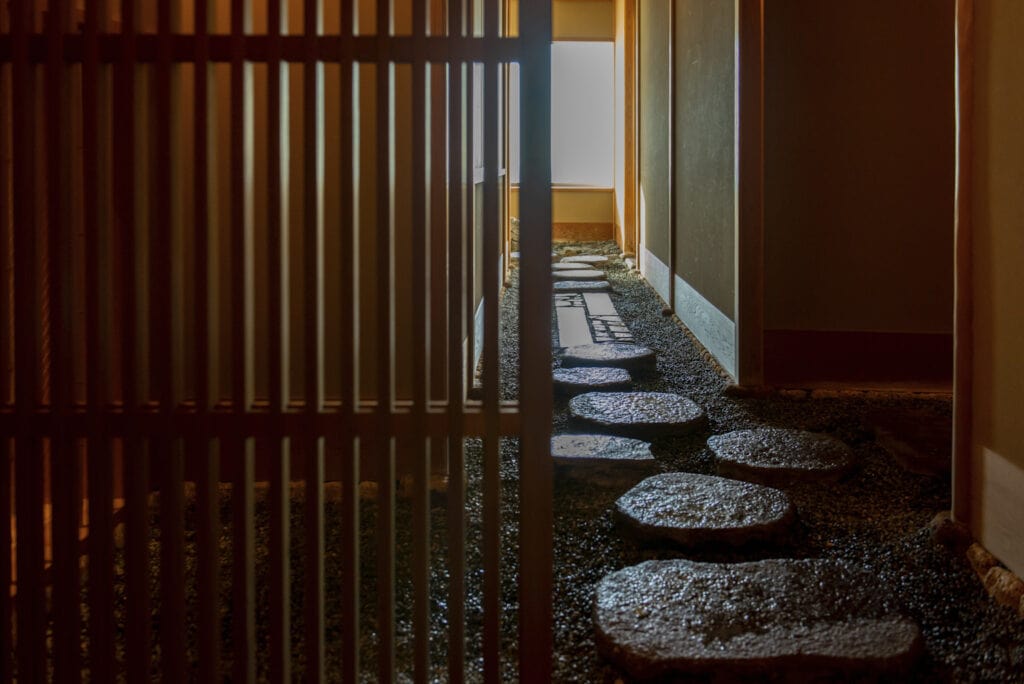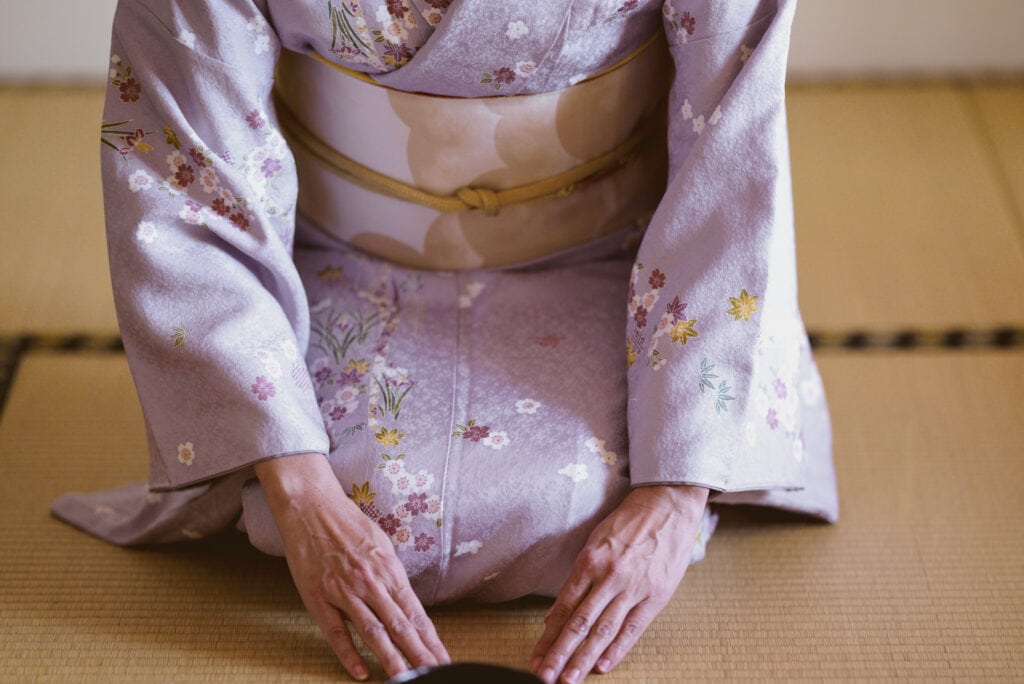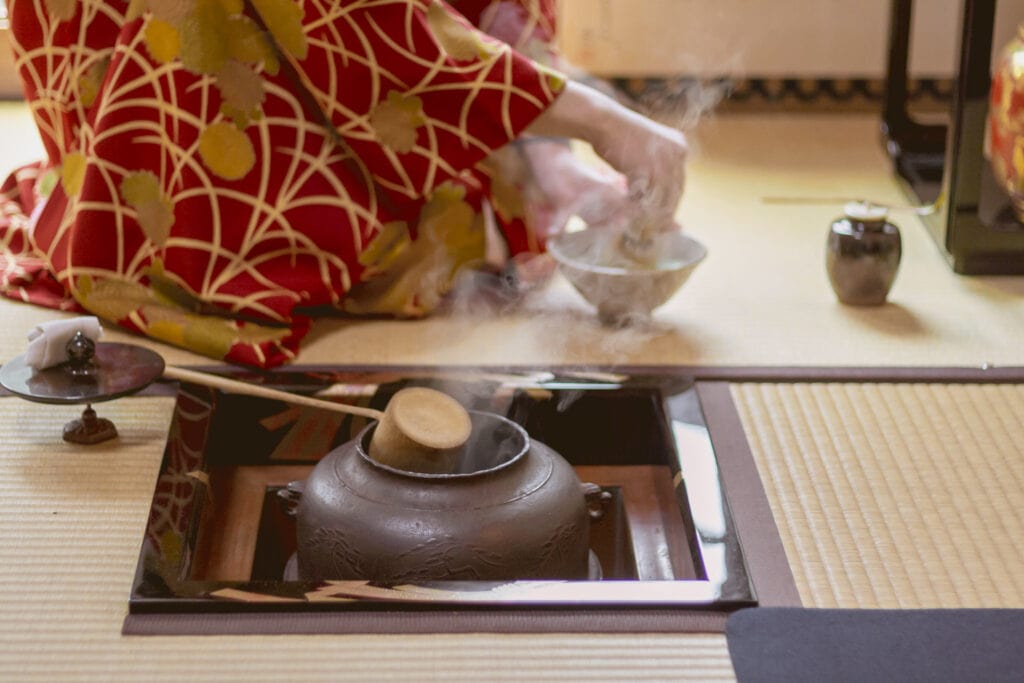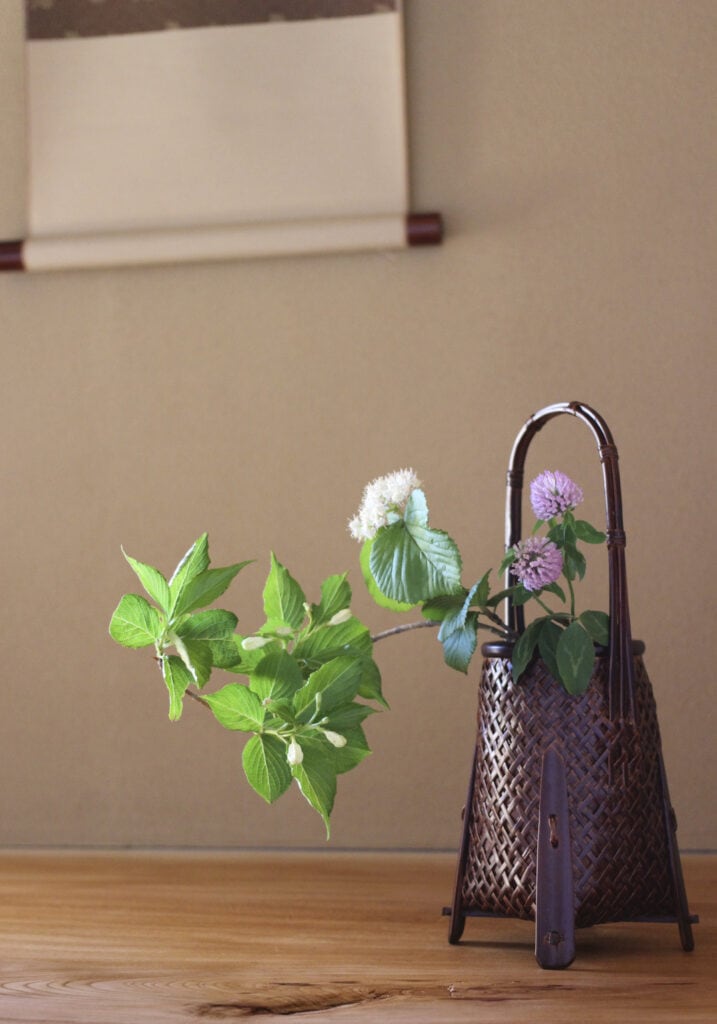The Japanese term Omotenashi (おもてなし) is usually translated as hospitality. However, this reading does not come close to doing justice to the complexity and depth of the term. In no language is there a truly equivalent counterpart to omotenashi - which is probably due to the fact that omotenashi stands for an attitude that is deeply rooted in Japanese culture and society is and encompasses much more than just attentive customer service.
Omotenashi can best be described as a mindful, committed form of hospitality characterized by heartfelt devotion to the guest or customer, and at the same time on the mutual respect of all parties involved for each other.
The goal of Omotenashi is to make the guest feel comfortable, cared for and enjoy details that have been specially considered for him.

The meaning of the term Omotenashi
In Japanese, there are two spellings for the verb "motenasu" (earlier spelling mottenasu): 以て成すand 持って成す. The preceding O (お) is an expression of politeness that is placed at the beginning of many Japanese words.
An adequate translation of the term omotenashi is not easy to find. This is because in the Japanese language two different terms, which differ in the kanji (originally Chinese characters) used and the meaning, can be pronounced the same. Thus a word, which can be pronounced in the Latin transcription and also the Hiragana and Katakana syllabary systems is written exactly the same, can be traced back to different kanji spellings and thus possibly also different meanings.
Achieve something by doing something for others
According to a popular theory, the term mottenasu (以て成す) first appeared as early as 604 AD in the Jyunanajyō-no-Kenpō (17条憲法, 17-article constitution) of Shōtoku Taishi (聖徳太子), a prince of the imperial family and politician of the Asuka period. This constitution is considered the first constitutional document of Japan.
The first article describes harmony Wa (和) as the highest form of respect (和を以て尊しと成す- Wa wo motte tōtoshi to nasu). The theory is that the term for "make" (wo motte, を以て) in this article became motte nasu (以て成す) and then mottenasu (以て成す), meaning "to entertain."
In this sense, motenasu means to achieve something by doing something for others.
Achieve something by being considerate of others
The other spelling of motenasu is composed of the two kanji for possess (持つ motsu) and achieve (成る naru) - that is, to achieve something by having something. Here, this "something" can also refer to intangibles such as a feeling. In this sense, omotenashi means through certain gestures and behaviors that come from the heart, Express appreciation and consideration to others. You could also say it's about, elegantly entertain the heart of the other and to delight through attention. Here we find the mindfulness known to Japanese culture: a state of mind that requires space for emptiness and silence to unfold, those typical characteristics that can also be found in traditional Japanese architecture or music.
Omotenashi as an expression of integrity
Another reading is "Ura omote nashi" (裏表なし), which means to have no front (表 omote) and no back (裏, ura).
This expression goes back to the ritual of the Japanese tea ceremony (茶会, chakai): by preparing the tea in front of the guests, the host expresses that nothing is hidden - that is, there is no front or back - and that he acts from a pure heart.
In a figurative sense, Omotenashi thus also understandably stands for a state of mind, for the integrity of a person who acts out of pure and original motives - an unconditional action, for which no consideration is expected.
The roots of Omotenashi
The roots of Omotenashi go far back into Japanese history and culture.
Today it is assumed that the expression was already known in the Heian period (平安時代, Heian-jidai, 794 - 1185) and was also used in the History of Prince Genji ( 源氏物語 Genji Mongatari), an outstanding novel in Japanese literary history of that era.
Zen Buddhism (bukkyo, 禅仏), which reached Japan from the 12th century and was further developed there, gave rise to a number of disciplines that became known as the ways (道, Dō) of Zen, including the way of tea (茶道 Chadō), the philosophy of the tea ceremony. This ritual, also called Cha-no-yu (茶の湯), was significantly developed in the 16th century by the Buddhist monk Sen-no-Rikyū (千利休) coined.
Buddhist tea ceremony significantly shapes Omotenashi
The grand master of tea developed fixed rules for the course of the tea ceremony, which influence Japanese culture, society and art to this day. The ritual of the tea ceremony is also considered the soul of Omotenashi - a mindset that far exceeds the mere idea of service. A short excursion into the world of tea ceremony makes the socio-cultural meaning of Omotenashi understandable.

Procedure and meaning of the tea ceremony
In a tea ceremony, both host and guests take on specific roles, contributing equally to the success of the gathering. The goal of the tea ceremony is to serve the best tea to the guests. But before the guests are handed the bowl of green matcha tea (濃茶 Koi-cha) by the host, many meaningful actions have already taken place.
For the guests, who usually arrive at a tea ceremony from everyday life, the tea path is a way to rest and meditate.
While walking along a garden path (路地 Roji), they symbolically brush away the thoughts and worries of the day, thereby preparing themselves for the tea ceremony. The cleansing of the mouth and hands symbolizes the purification of the heart and soul (洗心亭senshintei).
Although Japanese society is basically very hierarchically organized, all social distinctions are set aside during the tea ceremony - therefore, all guests enter a traditionally decorated tea room (茶室, chashitsu) by kneeling down.
Gratitude, humility, esteem and respect are the supporting values of such a gathering, which is not only for the people, but also for the tea utensils, to which special attention is paid.
Preparation of the tea ceremony
The careful preparation of a tea ceremony by the host may well take several days. Tableware and decorations are chosen very deliberately and depending on the season, the purpose of the event and the guests.
The scroll painting (掛け物 - Kakemono), which is hung in a special niche of the teahouse, the Tokonoma (床の間), and the arrangement of flowers (生け花 - Ikebana) are also perfectly matched to the circumstances.
Despite all the perfection in detail, the art of the tea ceremony consists in simplicity and plainness, superfluous or ostentation is consistently renounced in the Japanese tea house.
A quote from Rikyūs sums up this aesthetic of the simple and unfinished:
"The art of tea does not harbor any secrets. There is nothing more than boiling the water, preparing the tea and drinking it. That's all you need to know."
The seven rules of the Rikyū as the essence of Omotenashi
When asked what the tea ceremony was all about, Sen-no-Rikyū is said to have replied with seven rules (利休七則 - Rikyu-Shichisoku) have responded, which include much more than the preparation of tea and are still considered the essence of Omotenashi:
1. prepare a good tea for your guest (茶は服のよき様に- Cha wa fuku no yoki yōni).
Tea not only flatters the tongue, but also the heart. When you do something, also consider the feelings and circumstances of the other person. In this way, you create unity between host and guest.
2. arrange the charcoal so that the water boils well (炭は湯の沸くように- Sumi wa yu no waku yōni).
If you want to start a fire on which the water boils well, then you need to place the charcoal in the best possible way. If you only follow formalities, the fire will not be lit. And even if the fire is burning, it must be kept at a certain temperature so that it does not go out. In other words, it is important to understand the essence of things.
3. cool in summer - warm in winter (夏は涼しく、冬は暖かく- Natsu wa suzushiku, Fuyu wa atatakaku).
A sense of the seasons is important in the tea ceremony. When welcoming guests, we should think about their well-being and use all five senses to make their stay more pleasant.
4. flowers should be arranged as in the wild (花は野にあるように - Hana wa no ni aruyōni).
The beauty of wild flowers and the preciousness of life created by nature are internalized in the flowers arranged in the tea room to welcome guests. Their beauty is only a moment in life - arranging ephemeral beauty is also a form of hospitality.
5. make sure you have enough time to be there early (刻限は早めに - Kokugen wa hayameni).
Take your time and respect time. This means not only feeling relaxed, but also valuing the time of others. Only in this way can host and guest open their hearts to each other.
6. prepare for rain even if it doesn't fall (降らずとも雨の用意 - Furazutomo ame no you)
Be prepared both mentally and physically to act with deliberation at all times. An agile and sincere mind is the prerequisite for responding appropriately to any situation.
7. think about the other guests (相客に心せよ - Aikyaku ni kokoro seyo)
In the tea ceremony, several people enter the tea room at the same time to drink tea. Therefore, all those who share the same space should respect each other and ensure a pleasant coexistence.

The tradition lives on to this day
The Japanese tea ceremony in the Rikyūs tradition is still taught today in three main schools: Urasenke (裏千家 ), Omotosenke (表千家) and Mushakōjisenke (武者小路千家). At special academies such as the Urasenke Tea Ceremony College leaders engage with the way of tea and the importance of omotenashi to their leadership role.
Only once in a lifetime: Omotenashi and the Concept of Ichi-go ichi-e
Closely related to Omotenashi is the concept of the Ichi-go ichi-e, literally, "One time, one meeting" (一期一会), which is also attributed to the tea master Sen no Rikyū, who speaks of one chance in life (一期に一度 Ichi-go ni ichi-do).
Every moment in life is unique and cannot be repeated - even if the same group of people come together in the same place, the experience will still always be unique.
The task of the host is to take sincere and careful care of the proper conduct of this special ceremony. The guests, in turn, should pay respect to their host "as if it were a meeting that could happen only once in a lifetime" - as Rikyū's student Yamanoue Sōji (山上宗二) in his chronicle Yamanoue Sōji ki (山上宗二記) writes.
In short, the claim that every single encounter is perfect and arranged with mindfulness and appreciation.
Understanding Omotenashi from outside Japan
Looking at the highly ritualized procedures of the tea ceremony and the strict social relations in Japan, it becomes clear that Omotenashi is based on different socio-cultural foundations than the western form of hospitality in the hospitality industry.
Differences from Western notions of unconditional service.
In our, the western culture, the relationship between guest and host or customer and company is often defined by the metaphor "The customer is king" described.
However, this common phrase does not only imply the claim to fulfill all customer wishes with absolute obligingness.
The "customer-is-king metaphor" also expresses a hierarchical relationship: The king is above everything - be it people, problems or matters - he is always right and all other parties are merely subjects who must obey in case of doubt. A king's complaints are always legitimate and all his wishes are granted. Even when he behaves inappropriately, he is still treated politely.
Seeing the customer as king therefore means putting his needs above those of the host, the catering establishment and its staff.
And so it sometimes happens that guests from the Western culture feel entitled to a certain demanding behavior. Sometimes they act brashly because they expect a certain level of service, they have a certain idea that the host, the restaurant or the hotel is there to fulfill this idea, to please the guest.
In contrast, Japanese patrons enter an establishment with much more humility-also symbolized by the almost forced bow when entering a restaurant or Ryōkan through one decorated with Noren decorated entrance enters.
Omotenashi requires mutual respect at eye level
At this point, the Japanese understanding of good service sometimes clashes with the Western understanding of good service, for example in the restaurant industry.
Such a relationship between guest and host is deeply contrary to Omotenashi's understanding of partnership.
For in the tradition of the tea ceremony are Respect and attentiveness always a mutual matter, in which guest and host alike bear responsibility for a satisfactory result. In the tea house, in the face of the ritual tea ceremony, so to speak, all are equal. From experience, Japanese guests usually act differently, more cautiously, more respectful of the respective host and customs.
Thus, to properly understand omotenashi from a European or Western perspective, one must include the context in which it is practiced in Japan: a highly ritualized society in which mutual social relations are often influenced by multiple norms and adherence to extensive rules of conduct is expected. The stereotypical image of the extraordinary friendliness of the Japanese thus also exists in the context of appreciative guests, who approach the host's efforts or the customs of the house with respect and appreciation.
To put it bluntly, no Japanese person would ever start out as a guest, letting themselves go at a traditional tea ceremony, stretching their feet and doing whatever they felt like or felt good doing.
Likewise, a guest in a Japanese sushi restaurant would not simply begin to adjust chairs and tables himself as he sees fit, without at least carefully asking the staff. All this would contradict the basic idea of harmony (Wa) in Japanese society, which is also a central component of the Japanese culture. Japanese cuisine Washoku is.
Omotenashi, therefore, does not function as a one-way street in Japanese culture, but presupposes a respectful relationship based on reciprocity: the guest respects and appreciates the efforts of the host, and the host will do everything possible to make the guest feel comfortable and to serve him in an unobtrusive and attentive manner.
Omotenashi happens in the context of social norms of behavior
This is how you can feel exceptionally cared for and welcomed as a guest in Japan -. as long as you respect the rules of the hosts and stay within expectations.
If you leave this framework and appear disrespectful to the efforts of your hosts, you can very quickly experience a very different side of Japanese behavior: the protruding nail is hammered in - Anyone who behaves "wrongly" in the opinion of the group (whose opinion is usually determined by norms or the hierarchically higher ranking) is also quickly isolated very harshly and sometimes not even treated with a minimum of respect according to Western standards.
Of course, this frame of expectation is often willingly very extended for guests and visitors from abroad. Because, of course, the Japanese know that their society is complex and complicated (see "ware ware Nihonjin"). Someone who does not belong to this culture and is integrated into the social system will always be judged differently, and perhaps never be able to be part of the society there in this sense.
However, one thinks his part and also the expectation framework granted to the foreign guests has limits in his extension.
Therefore, a true understanding of "Omotenashi - Hospitality in "Japanese" is only possible in the context of the rules and expectations that prevail in Japanese society, with its often highly ritualized, complex social connections.
Experience Omotenashi in Japanese daily life
The spirit of Omotenashi goes far beyond the stillness of the teahouse and lives on in modern Japanese society to this day.
Whether shopping, in a hotel or restaurant - the customer is always treated with respect, devotion and attention to the smallest detail. Even if some companies give their employees exact rules of conduct for dealing with customers - omotenashi is not a set of rules, but an attitude that forms the foundation of every encounter between host and guest, even in today's Japan.
Omotenashi at the ryokan: arriving home
A special experience of traditional Japanese hospitality can be had as a guest at the Ryokan (旅館) experience. High-quality inns were called ryokan as early as the Edo period (江戸時代, Edo Jidai, 1603 to 1868). The traditional inns, where guests usually eat their meals, still operate as they did 100 years ago. In an ambience of consummate elegance and modest restraint that appeals to all the senses, Omotenashi encompasses the entire appearance - from the attire of the staff to the choice of food.
This is also expressed by the fact that all guests at the ryokan usually don a yukata (浴衣, "bathing suit," a type of light kimono) provided by the house, and thus hierarchy levels seem to disappear.
The guest should feel like this in the ryokan, as if returning home - the understanding of his person, his preferences and expectations are in the foreground.
Omotenashi in this sense does not require formalisms, but comes from a communication from the heart and a person-to-person encounter. A traditional ryokan in Japan is often the best way to experience omotenashi.
Omotenashi in gastronomy
Perfection and attention to detail in the preparation of food and its presentation - in Japanese gastronomy, the spirit of Omotenashi is omnipresent.
As described by Rikyū, the change of seasons and the accompanying changes have always had a special significance in Japan - as the event of the cherry blossom (桜の花 Sakura no hana) impressively shows.
This sensitivity is also found in the Japanese cuisine. For to enjoy the subtle flavor changes during the season, we distinguish between ingredients that appear early in the season (はしり hashiri), seasonal ingredients (旬 shun) and leftovers (名残 Nagori) distinguished.
The guest should thus experience the entire range of nature with his senses - in keeping with Rikyū's concept of "wild flowers". Accordingly, of course, the catering is also an aesthetic matter, for which no effort is spared. Tableware and decoration of the dishes are gladly selected according to the season. (cf. the effort we put into our Kaiseki Events operate)
While glass provides a cool atmosphere in summer, thick ceramics and warm colors create a cozy atmosphere in winter.
This attention to detail and even seasonal adaptation of tableware is also very evident in of Japanese haute cuisine, the Kaiseki, which also has significant development parallels with the development of the tea ceremony.
Omotenashi while shopping
Anyone traveling in Japan encounters the special Japanese hospitality at every turn.
Aware that customers always have a choice, even the simplest activities become a gesture of respect and gratitude - in the artful wrapping of a gift, the aesthetic design of a display, the addition of ice when purchasing heat-sensitive foods, or the presentation of a simple receipt on a tray.
Omotenashi continues to reinvent itself even in modern Japan - a more recent attention is to seal the paper bag after shopping. This involves folding the end of the tape over slightly to make it easier for the customer to open.
If it starts to rain during a shopping trip in a department store, the background music may suddenly change - and subtly indicate the rain through the choice of music piece. This also allows employees to make the shopping experience more pleasant for their customers in the (windowless) environment of a department store by, for example, covering the paper bags with plastic to protect them from the rain, free of charge. Making sure that the customer leaves the store with a certain good feeling - that's omotenashi.
Omotenashi, then, means that as a host, business, service provider, you try very hard to think along for the guest, to accommodate them, and to make their experience a heartily welcome, pleasant one.

Omotenashi as a natural part of life
In Japan, hospitality is a natural part of life and expects nothing in return.
Therefore, it is not customary to give a tip. Who nevertheless wants to thank once from the heart, has the possibility of the Kokorozuke (心付け) - an expression of deepest gratitude by "adding" (付ける tsukeru) the heart (心 kokoro).
"Respecting harmony," as Shōtoku Taishi wrote more than 1400 years ago, still makes up the magic of Omotenashi - since time immemorial the guarantee of smooth human coexistence in the densely populated island nation of Japan.
Because Omotenashi is not a one-way street, but works in both directions, this special form of hospitality helps with a respectful interaction and gladdens the heart of the people of Japanwho are often confined to a narrow social or spatial corset. Omotenashi as an attitude is an expression of special attentiveness to the guest, which dramatically distinguishes the Japanese understanding of service from the understanding of service in Germany.
Omotenashi in the media
Here is another nice, but somewhat dated, report on Omotenashi that touches on the subject a bit, but then seems to mix it up with other topics as well:

By loading the video, you accept YouTube's privacy policy.
Learn more







